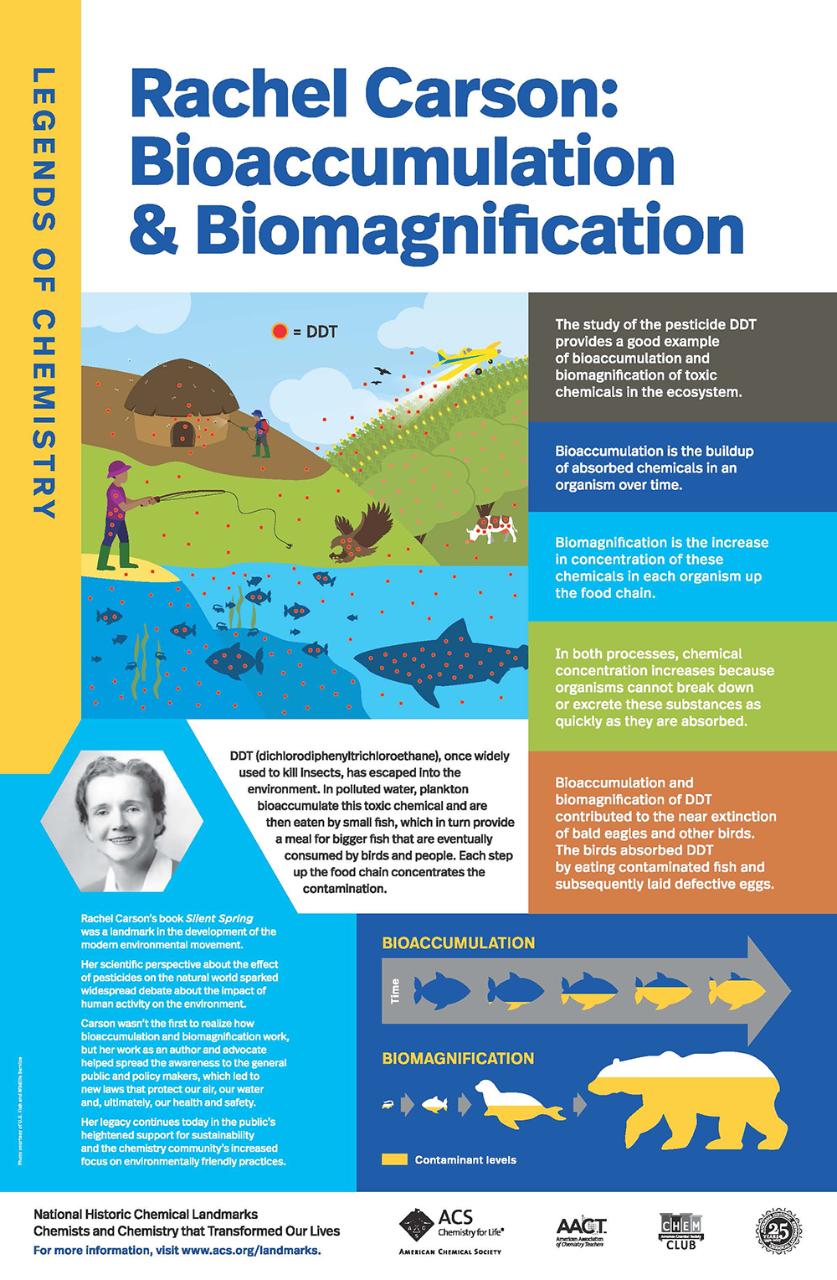Rachel Carson: Bioaccumulation and Biomagnification Poster
Rachel Carson: Bioaccumulation and Biomagnification
Rachel Carson’s book Silent Spring was a landmark in the development of the modern environmental movement. Her scientific perspective about the effect of pesticides on the natural world sparked widespread debate about the impact of human activity on the environment.
Carson wasn’t the first to realize how bioaccumulation and biomagnification work, but her work as an author and advocate helped spread the awareness to the general public and policy makers, which led to new laws that protect our air, our water and, ultimately, our health and safety.
Her legacy continues today in the public’s heightened support for sustainability and the chemistry community’s increased focus on environmentally friendly practices.
The study of the pesticide DDT (dichlorodiphenyltrichloroethane) provides a good example of bioaccumulation and biomagnification of toxic chemicals in the ecosystem.
Bioaccumulation is the buildup of absorbed chemicals in an organism over time.
Biomagnification is the increase in concentration of these chemicals in each organism up the food chain.
In both processes, chemical concentration increases because organisms cannot break down or excrete these substances as quickly as they are absorbed.
Bioaccumulation and biomagnification of DDT contributed to the near extinction of bald eagles and other birds. The birds absorbed DDT by eating contaminated fish and subsequently laid defective eggs.
DDT, once widely used to kill insects, has escaped into the environment. In polluted water, plankton bioaccumulate this toxic chemical and are then eaten by small fish, which in turn provide a meal for bigger fish that are eventually consumed by birds and people. Each step up the food chain concentrates the contamination.


